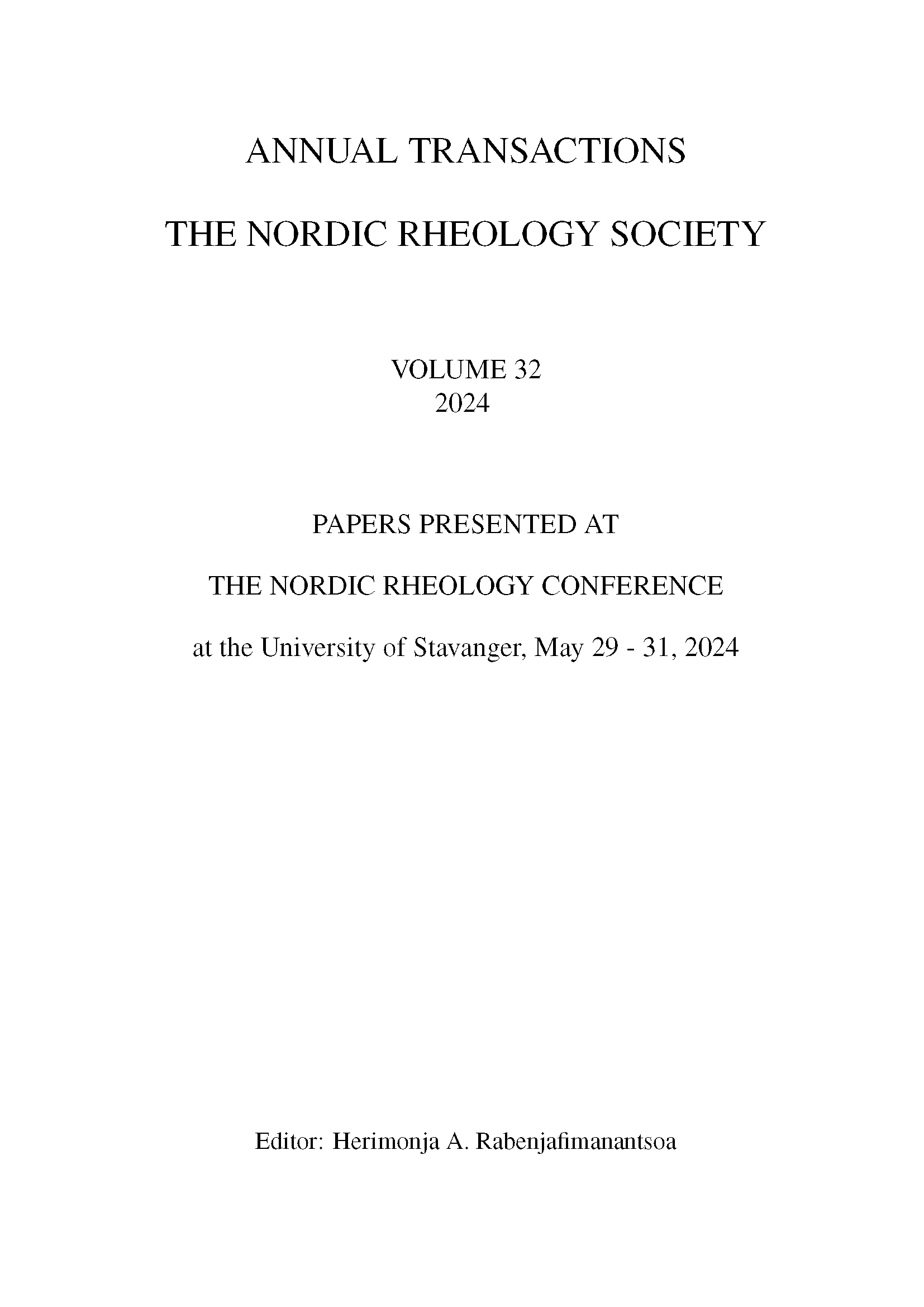Impact and Interaction of Polymers, NACL and Cellulose Particles on the Rheological Properties of Drilling Fluids under Conditions of Thermal and Mechanical Wear
DOI:
https://doi.org/10.31265/atnrs.777Abstract
Water-based drilling fluids are often prepared by combining polymers for viscosity and filtration control and salts for inhibition and density into a freshwater or seawater base fluid. For certain drilling operations, the desired drilling fluid density may limit the potential concentrations of salts, whereas high temperature stability may still be required. In the following the interaction effects between polymers, salts and cellulose based particles on fluid viscosity and fluid loss, and any implications for optimising recipes for low density water-based drilling fluids are presented.
The viscosity impact of xanthan gum and crosslinked starch were highly dependent on the presence of salts and cellulose particles when exposed to hot-rolling at 90°C. It was found that either cellulose particles or salts were needed for the xanthan gum and crosslinked starch to retain the viscosity impact after exposure to high temperatures and mechanical wear. In contrast, the viscosity impact of polyanionic cellulose showed less viscosity interaction effects in the presence of salts and cellulose particles. A statistically significant relationship between the calculated yield stress of the fluid and the API fluid loss was identified, indicating that a higher yield strength may lead to lower fluid loss. In the tests conducted with freshwater, the addition of a selected cellulose particle blend led to more stable fluid rheology, higher fluid yield strength and lower fluid loss.
In general, the introduction of mechanical wear during the hot-rolling process was found to reduce the viscosity impact of the polymers in addition to the thermal degradation, thus indicating that the rheological stability of the fluid is dependent on grinding or shearing during circulation in the wellbore.
References
Sun, Y.; Huang, H. Effect of Rheology on Drilling Mud Loss in a Natural Fracture, 49th US Rock Mechanics / Geomechanics Symposium 28 June- 1 July, 2015. Paper ARMA-2015-345, San Francisco, CA, USA
Mohamed, A.; Salehi, S.; Ahmed, R. Significance and complications of drilling fluid rheology in geothermal drilling: A review, Geothermics, 2021, 93, 102066
https://doi.org/10.1016/j.geothermics.2021.102066
Zou, Z.; Zhao, Q.; Wang, Q.; Zhou, F. Thermal stability of xanthan gum polymers and its application in salt-tolerant bentonite water-based mud. Journal of Polymer Engineering, 2019, 39(6), 501-507.
https://doi.org/10.1515/polyeng-2018-0386
Patel, J.; Maji, B.; Moorthy, N.S.H.N.; Maiti, S. Xanthan gum derivatives: review of synthesis, properties and diverse applications. RSC Advances, 2020, 10, 27103.
https://doi.org/10.1039/D0RA04366D
Nelson, A.Z., Ewoldt, R.H., Design of yield stress fluids: A rheology-to-structure inverse problem, Soft Matter, 2017, 13, 7578 7594
https://doi.org/10.1039/C7SM00758B
Saasen, A.; Ytrehus, J.D., Rheological properties of drilling fluids: Use of dimensionless shear rates in Herschel-Bulkley and Power-law models, Applied Rheology, 2018, 28, https://doi.org/10.3933/APPLRHEOL-28-54515
Klungtvedt, K.R., Drilling fluid additives for wellbore strengthening and reservoir protection, PhD thesis No 726, University of Stavanger, 2023.
Kestin, J.; Khalifa, E.; Correia, R. Tables of the dynamic and kinematic viscosity of aqueous NaCl solutions in the temperature range 20-150 C and the pressure range 0.1-35 MPa, Journal of Physical and Chemical Reference Data, 1981, 10(71)
https://doi.org/10.1063/1.555641
Klungtvedt, K.R. and Saasen, A. "The Role of Particle Size Distribution for Fluid Loss Materials on Formation of Filter-Cakes and Avoiding Formation Damange". OMAE2022-79501. Journal of Energy Resources Technology 22-1217, 2023.
https://doi.org/10.1115/1.4056187
Klungtvedt, K.R. and Saasen, A. "Comparison of Lost Circulation Material Sealing Effectiveness in Water-Based and Oil-Based Drilling Fluids and Under Conditions of Mechanical Shear and High Differantial Pressures". OMAE2022-79502 and Journal of Energy Resources Technology 22-1218, 2022.

Downloads
Published
Issue
Section
License
Copyright (c) 2024 Karl Ronny Klungtvedt, Arild Saasen

This work is licensed under a Creative Commons Attribution 4.0 International License.
